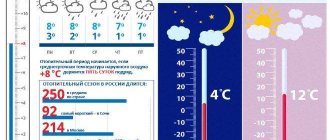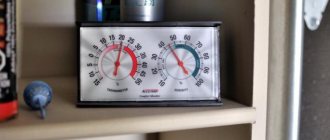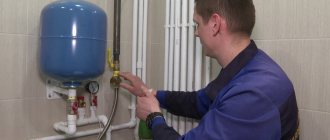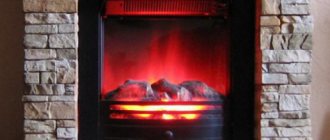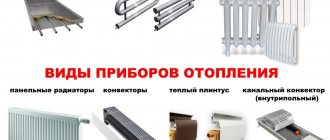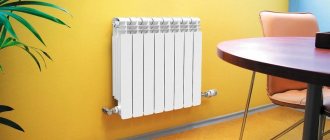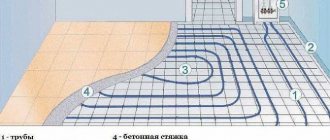With the birth of a child, many mothers think about how to maintain an optimal microclimate in their home. After all, this is very important for the health and development of the baby. If the air is too dry, crusts form in babies' noses, making it difficult to breathe. And this can cause snoring and restless sleep.
What humidity should be in a nursery?
Skin rashes, periodic coughing, sniffling - all these signs may not be cold symptoms at all, but a consequence of high or low humidity in the room. When exhaling, the air inhaled by the baby becomes 100% moist. If the humidity in the room is below 50%, then the child’s body will release moisture, and this leads to fluid loss. If a child consumes a small amount of liquid, dehydration may result.
In autumn and spring, the air humidity in the apartment is mostly normal. And in summer and winter it needs to be increased a little, because at these times of the year the air is drier. The following will help normalize the indicators:
- wet cleaning once a day;
- installing containers filled with liquid near heating devices and near the place where the child is most often located;
- ultrasonic or steam humidifier;
By controlling the temperature and humidity in the room, you can reduce the incidence of acute respiratory viral infections. The correct microclimate has a positive effect on the growth, development and well-being of the baby. However, before humidifying the air, it is necessary to measure the humidity, since high levels are also not desirable.
The children's body is structured a little differently; in children, all processes in the body go much faster than in adults. Thermoregulation in children is carried out through the skin and respiratory organs, and it is not perfect. The recommended room temperature for children is 18-20 degrees Celsius. During the day, while you are awake, it can reach 21-22 degrees, but during sleep it is better to lower it to 18 degrees. Do not forget about ventilation, it is carried out 2-3 times a day. It is better to ventilate the apartment during walks, as well as before going to bed. The correct microclimate improves:
- appetite;
- mood;
- general well-being;
On a note!
Newborns have poorly developed sweat glands.
The recommended air humidity in an apartment or house for a child should be from 50 to 70%. This can be determined using a device called a hygrometer. It is sold in hardware stores. You can also use Magik Air - this is a smart microclimate system, you can even control it with the help of gadgets.
What to do if the room is too dry for the baby?
There are several ways to humidify the air so as not to spoil your baby’s health:
Ultrasonic humidifiers - in the store you can find many inexpensive and effective models, even for 1000 rubles. But you should not use such humidifiers in children's rooms if the water that enters the device is not first purified through a filter. In addition, water must be added regularly.
Nozzle humidifiers are an ideal option for a baby’s room. They consume little energy, supply water from the tap into the system automatically and are easy to maintain.
The worst option for a child's room is steam humidifiers . They have many shortcomings. Firstly, they heat the air, which should be cool in the room where the child lives. Secondly, they consume a lot of electricity. Thirdly, the devices are dangerous for children. Steam appliances heat water like electric kettles and spray it around. When a child learns to move independently, there is a risk that he will want to get to the equipment, try to disassemble it and get burned.
How to humidify the air
Many ways have been invented for this. The most effective is to buy a humidifier, they come in several types, one of the best is ultrasonic, it is almost silent and gets the job done faster. However, it is not always possible to buy it, and then folk methods will come to the rescue:
- A wet sheet - it is hung on the radiator, and when it dries, it is replaced with another one.
- A container of water is placed near the battery.
- A plastic bottle with a hole cut out in the middle is hung on the battery and filled with water. Afterwards, take several pieces of fabric, gauze or bandage, lower one end into water, and tie the other to the battery.
- Vessels with water can also be placed on furniture, the effect will be less noticeable, but it will be there.
How to reduce air humidity
High humidity also adversely affects the development and health of the baby. After all, due to dampness, the temperature in the apartment decreases. Also, in a damp room, an unpleasant odor appears and a fungal coating may form on the walls or furniture. And through the respiratory system, toxic substances enter the lungs. The child usually begins to get colds more often. Therefore, high humidity also needs to be dealt with.
To normalize indicators, you first need to identify the reason for their increase. Often the source of moisture is an external wall. You can conduct a small experiment: a piece of glass is applied to the wall, and if condensation has formed between it and the wall, then the source has been found. In this case, the outer wall must be insulated using vapor-permeable materials. It is also necessary to better heat an apartment or house, and for this you may need additional heat sources (heater or convector). If the humidity rises periodically, it is advisable to follow the following recommendations:
- ventilate the room three times a day;
- insulate window openings;
- eliminate draft sources (floor, walls)
- install moisture absorbers or dehumidifiers;
The most optimal air temperature for humans in different residential areas
Optimal home heating rules are a compromise of the highest possible degree of comfort and concern for the normal functioning of the body. The functions of the rooms are different: heating of the rooms depends on the purpose.
The bathroom is one of the warmest rooms in the apartment
The bathroom is mostly intended for water procedures. Since water promotes thermoregulation, low levels of warming up provoke hypothermia in the body. The optimal bathroom room temperature is 23°C. The bathroom is susceptible to mold due to high humidity: adequate ventilation is especially important.
Children's room - heat only harms
The children's room is a kind of universal room, sometimes used almost around the clock. During the day it serves as a playroom for the little ones. At night, however, children should get as much sleep as possible. During the day, optimal heating levels for a child's room are 20-22°C. Especially when there are babies and young children in the room, it is not recommended to reduce the numbers. At night, however, 18°C is enough even for newborns.
Kitchen, dining room and living room - beware of overheating
In the kitchen, the optimal heating level is 18°C. The stove and other kitchen appliances heat the room: setting high settings for the split system is not recommended in order to avoid overheating. However, if the kitchen also serves as a dining room or living room, it is worth raising the temperature to 20°C. The living room is one of the rooms in the apartment where we spend the most time. Most people do not necessarily actively use the space in the living area: they watch TV here, read a book, talk, or relax. As a result, the optimal heating of the living room is at a relatively high level: depending on the feeling of cold, 20-23°C.
Bedroom
The bedroom, as the name suggests, is mostly used for sleeping. Not only the duration of rest, but also the ideal room climate is decisive for a restful night's sleep. To create an optimal balance during the night's rest, the room heating is not too high: otherwise problems with well-being may arise. Therefore, the most comfortable heating in the bedroom is only 17-18°C. Some experts recommend even lower numbers: 15-18°C. For those especially sensitive to cold, such a low reading may be uncomfortable. It is worth raising the level to 20°C. However, where the thermometer finally stops accurately determines the personal sensation of cold. The ideal state of the surrounding atmosphere - you are not cold, you are not sweating
The indoor climate should be thermoneutral: that is, you should not feel any discomfort externally, and the surrounding space should not attract attention. However, even when relying on internal sensations, the thermometer should not rise above 20°C
If a person freezes under a blanket, the process of falling asleep is much worse, and at extremely low rates it is almost impossible: the person mistakes dying associated with hypothermia for sleep. When the bedroom is colder than the body needs, instead of recovering, the body must generate energy to keep internal heating constant. In addition, the constant cold in the bedroom causes muscle tension, reducing the recovery effect.
Too high a temperature in the bedroom makes us sweat under the covers. Even just a temperature that is warmer than necessary does not allow us to sleep well: dry indoor air has a negative effect on the body. The consequences are:
- Dry mucous membranes of the mouth and nose.
- Cough.
- Headache.
Timely ventilation and humidity control play an important role for a comfortable night's rest. Excessive humidity not only affects night's sleep, but also offers uninvited guests ideal living conditions: mites in house dust, mold spores ideally reproduce in high humidity, incorrect temperature, poor cleaning.
How to Maintain Humidity Levels for a Newborn
It is believed that the temperature in a baby’s room should vary from 18 to 20 degrees. It should be remembered that each child is individual, and the temperature in the room should be adjusted depending on the child’s behavior and well-being. Many mothers and grandmothers, having arrived from the maternity hospital, wrap up their babies, while turning on all kinds of heating means. This is not correct, because they dry the air, and as a result, the baby may experience:
- increased body temperature (a common occurrence with overheating);
- bloating;
- difficulty breathing due to dry mucous membranes;
On a note!
Premature babies need warmth, 18-20 degrees for them is a low temperature.
To monitor the thermometer readings, you need to hang a thermometer next to the crib. In winter, to reduce the indicators, the room is ventilated; it is better to do this while walking. In summer, the temperature in the room can be adjusted using an air conditioner, but it is better to do this also without a child in the room. In hot weather, you need to water and bathe your baby more often, this will help prevent dehydration.
How to Maintain Optimal Performance
A child vomits bile with or without fever - how to help with nausea
It is not difficult to control the microclimate in a house or apartment. Not only special devices, but also improvised means help in such situations. If you combine all the methods, the result will be excellent.
Ways to increase
By following simple rules, you can quickly increase the humidity level and maintain it at normal:
- You can install an aquarium or a decorative miniature fountain in a baby’s room or apartment.
- Dust and wash floors frequently.
- Try to use air conditioners and other heating devices less often (only if necessary).
- To urgently increase humidity, you can hang laundry around the rooms after washing or spray water with a spray bottle.
- Get more indoor plants on your windowsills.
A large number of plants on the windows helps get rid of excessive dryness
Such simple measures will help maintain normal humidity levels in winter.
How to reduce humidity
If the room has a high level of humidity, then it should be reduced. To do this, you can perform the following activities:
- Turn on the heater in the room every day (for 15-20 minutes).
- Ventilate the room daily, regardless of the weather.
- Purchase special tablets to absorb moisture, which are placed around the perimeter of the room.
- Buy a special dehumidifier.
Frequent ventilation helps remove excess moisture from the air
With the purchase of a special device to reduce humidity levels, the indicators are normalized in a few hours.
Komarovsky's opinion
What this famous doctor thinks is of interest to many parents, because his advice is not only reasonable, but also useful. Komarovsky associates the increase in morbidity rates in the cold season with dry air. After all, heating devices often actually dry it out. The nose contains villi that trap viruses and pathogenic microorganisms and prevent further penetration. And since the air is too dry, the nasal mucosa dries out, and the villi in this case are not able to fulfill their purpose. Then viruses and infections easily enter the body, and as a result the child gets sick.
Regarding the norm of air humidity in an apartment for a child, Komarovsky adheres to the opinion of the majority of doctors. This is especially important for a sick child, because it is much easier to transform a dry cough into a productive one in high humidity. If it is not possible to raise it, it is recommended to give the child something to drink more often and rinse the nose with saline solution.
How and what to measure
What to cook for your child’s breakfast quickly and tasty
The level of humidity in an apartment for a child can be controlled by special devices (sensors and hygrometers). They display the measurement result as a percentage and suggest what value should be in the apartment for a newborn using sound signals. They are easy to use.
For home you can use:
- wireless thermohygrometers that report deviations with an audible signal;
- digital instruments that measure, in addition to humidity, temperature;
- hair hygrometers, which contain synthetic fibers (hair).
Such devices must be installed in a room away from heating devices, so that there are no drafts.
Special instruments are used to measure humidity levels
On a note. To humidify the air in a child's room, it is recommended to purchase special humidifiers. They often have built-in sensors that allow you to monitor humidity levels.
A simple measuring device can be an ordinary glass. Pour some water into it and put it in the refrigerator until the temperature of the liquid reaches +3-5 °C. Then they take it out and put it in the room. If the condensation that appears on the walls of the glass dries quickly (3-5 minutes), then the level of importance is low. If streams appear on the glass, then the air is over-humidified. Under normal conditions, the state of condensation on the walls of the glass will not change within a few minutes.
A pine cone will help you roughly measure the humidity. They put it in the room and leave it for several hours. If the scales are pressed to the base, the air is over-humidified; if they open, the air is over-dried. With normal values there will be no changes.

